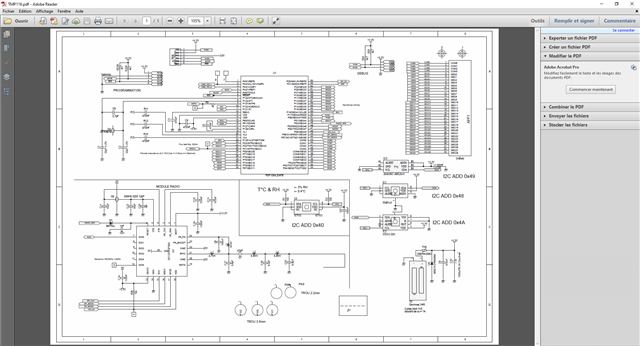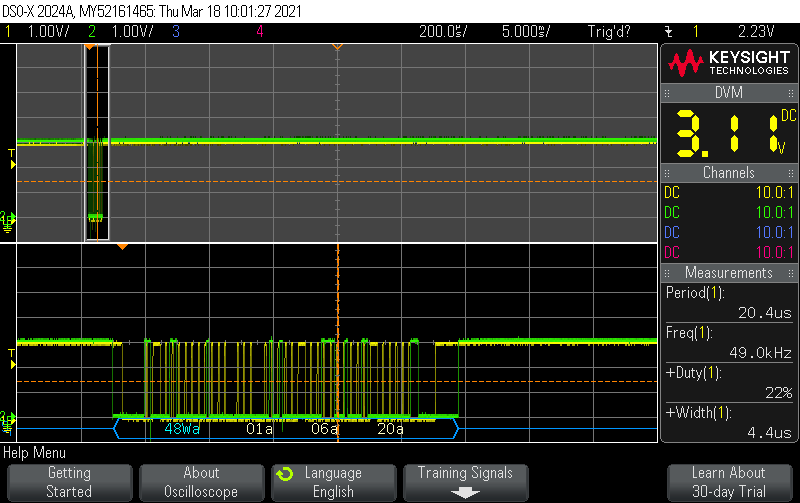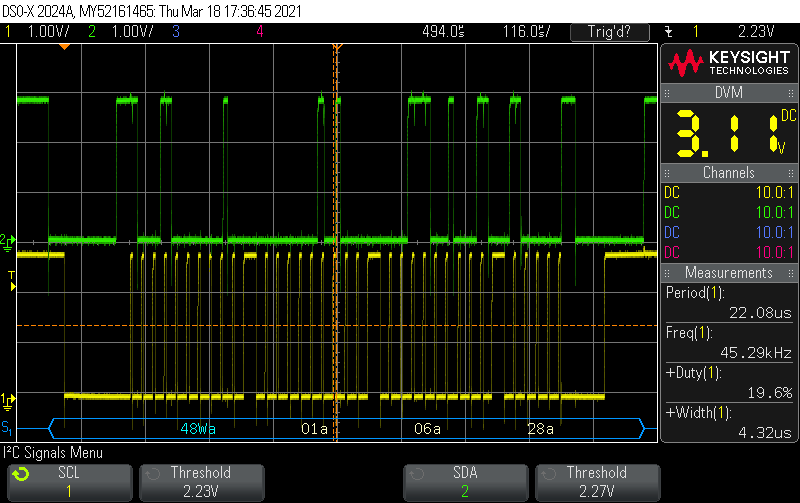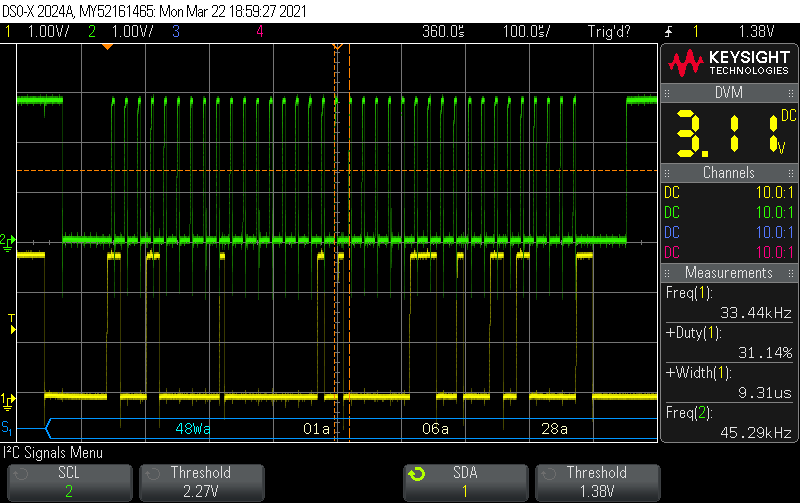Other Parts Discussed in Thread: HDC2080
Hi all,
We are using the TMP116 in a battery powered application and it works fine to give temperature.
After entering SD mode, it still consume approx 100uA when it's defined to be at under 1uA in the datasheet.
Does someone has ever seen this problem.
It has been on the same pcb as a SI7054 which consumes approx 1uA in SD mode so it doesn't seems to be a pcb design problem.
Is there something special to do in add to sending the powering down command?
Many thanks for help
Best regards
Phil







